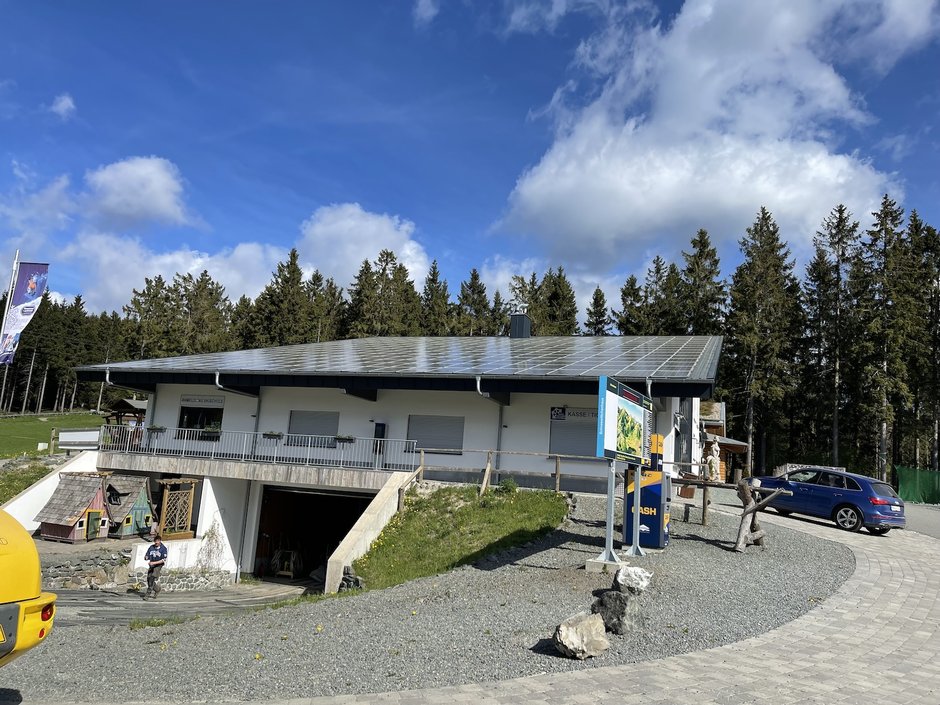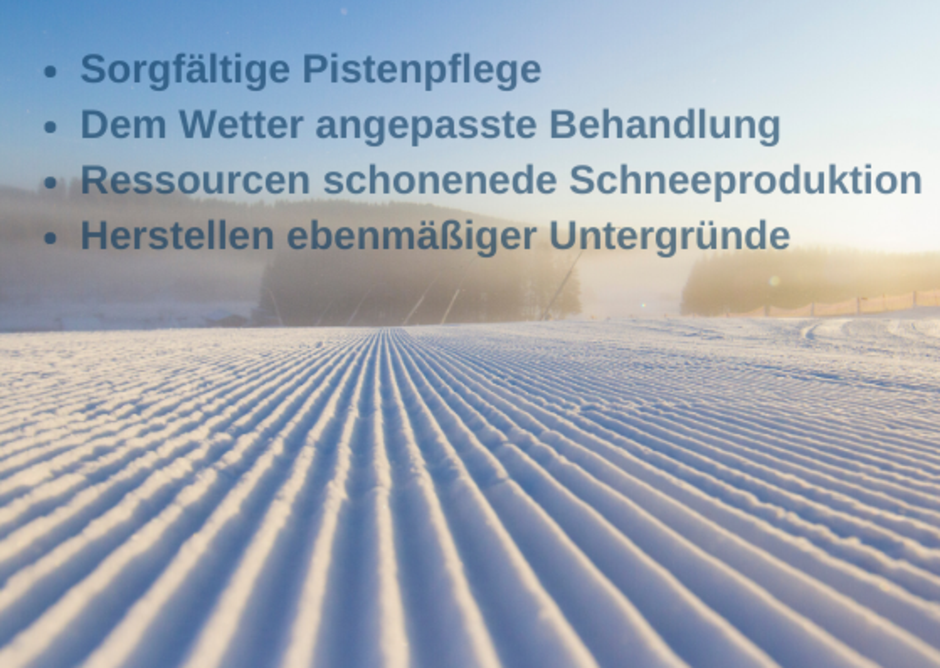
How do ski resorts save energy and CO2 ?
Every business needs energy, not just ski resorts. Even lying on the couch and streaming a series costs a lot of electricity. At around 18 kWh per day and guest, skiing ranks in the lower midfield compared to other leisure activities. Nevertheless, ski resort operators are doing a lot to keep energy consumption and CO2 emissions as low as possible.
For example, ski resorts use precise snow depth measurements to make optimum use of the available snow and determine the exact amount required. Measuring snow depth using GPS reduces the amount of energy used for snowmaking by 10 percent and improves the quality of the slopes at the same time.

Use of renewable energies
Since 2020, the 4 largest ski resorts have been using exclusively green electricity. This accounts for 87.6% of the electricity requirements of the region's entire ski resorts. The use of green electricity reduces CO2 emissions in these areas by 90%.
A 6,000 square meter photovoltaic system has been in place at Winterberg's Remmeswiese since 2009. It generates electricity from solar energy and feeds it into the grid. It makes a major contribution to improving the CO2 balance of winter sports vacations. With an average solar yield of 245,000 kilowatt hours per year, the CO2 savings amount to around 146,000 kilograms. The system cost 1 million euros. The project was financed by a citizens' energy cooperative founded on the initiative of the lift operators.
There are other, smaller photovoltaic systems on many of the roofs of functional buildings in the ski resorts. There are nine of these systems in the Winterberg ski lift carousel. In 2018, for example, they generated a total of 609600 kwh.
Modern technology can help lift operators save energy with floodlights. The first slope with energy-saving and long-lasting LED technology is located at Köhlerhagen.
Energy-efficient snowmaking
Snow production requires less energy than is often assumed. Modern snow guns work many times more energy-efficiently than they did at the turn of the millennium. This is why the lift operators in the Sauerland winter sports arena are constantly replacing older equipment with new ones. Snow lances are used wherever possible. They require less energy than classic snow cannons, but have more losses due to drifting.

Snow management
Regardless of whether it is natural snow or technically produced, snow is a valuable raw material that requires special treatment in order to withstand the stresses of skiing, temperatures and weather conditions. This includes proper slope grooming. Rolling the slopes every evening plays a major role in this. Snow groomers are experts who work with a great deal of knowledge and experience. This is because the snow cover needs to be treated in a way that is adapted to the respective temperature and weather conditions in order to achieve an optimum balance between slope quality and durability.
Appropriate preparatory work is also part of the resource-conserving use of snow. The summer management of the slopes plays a decisive role in how quickly the lift operators can offer their guests a well-prepared snow surface. Even meadows without hollows or gullies are necessary in order to be able to produce a continuously good skiable slope even with little snow.
